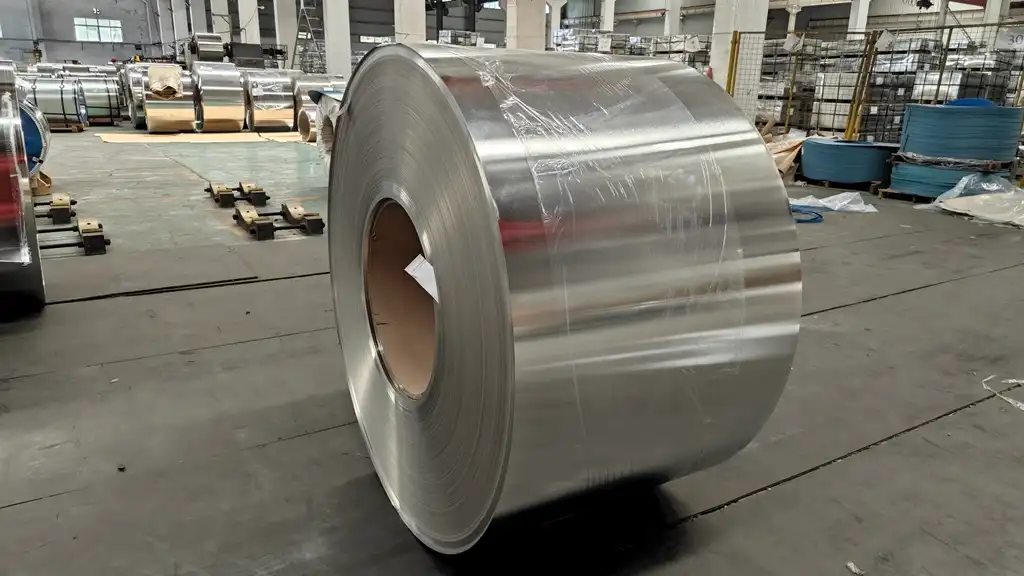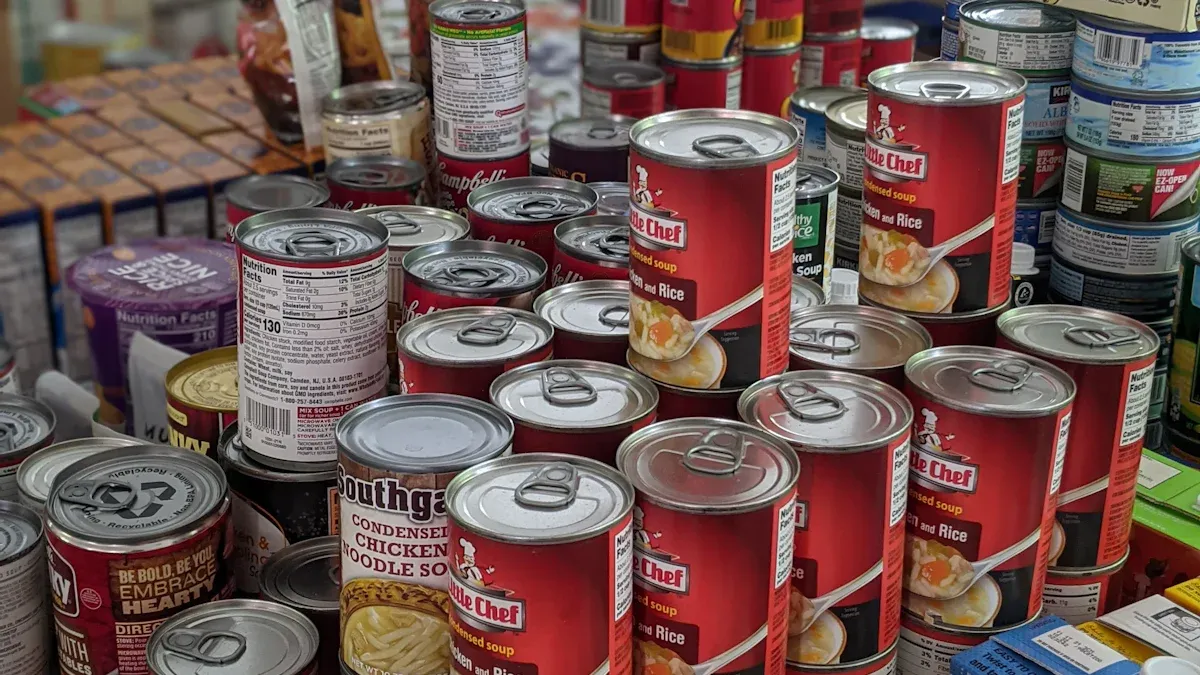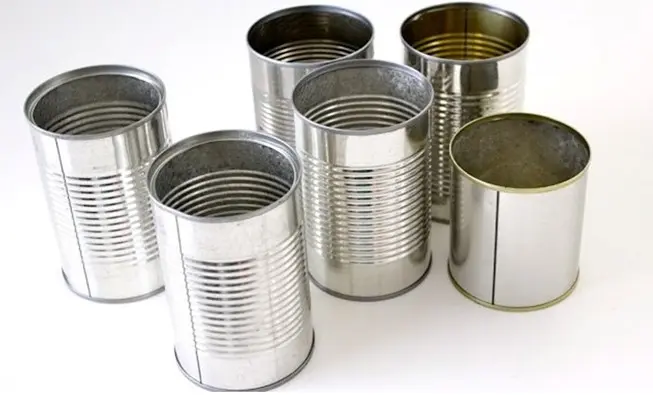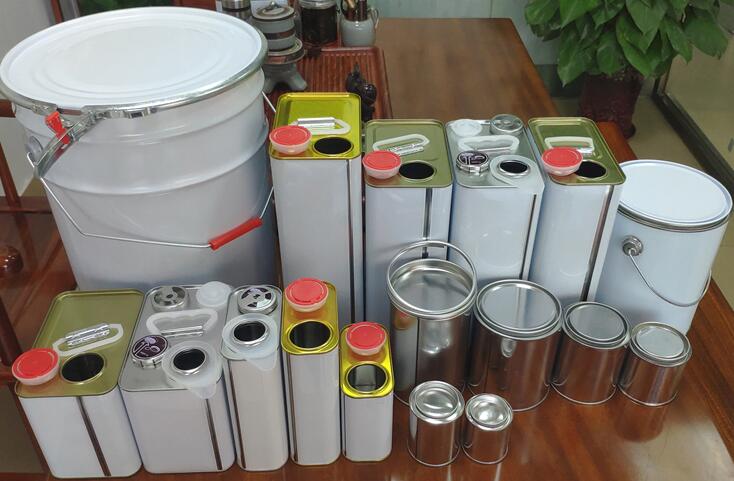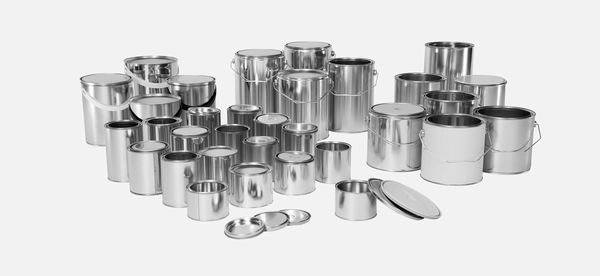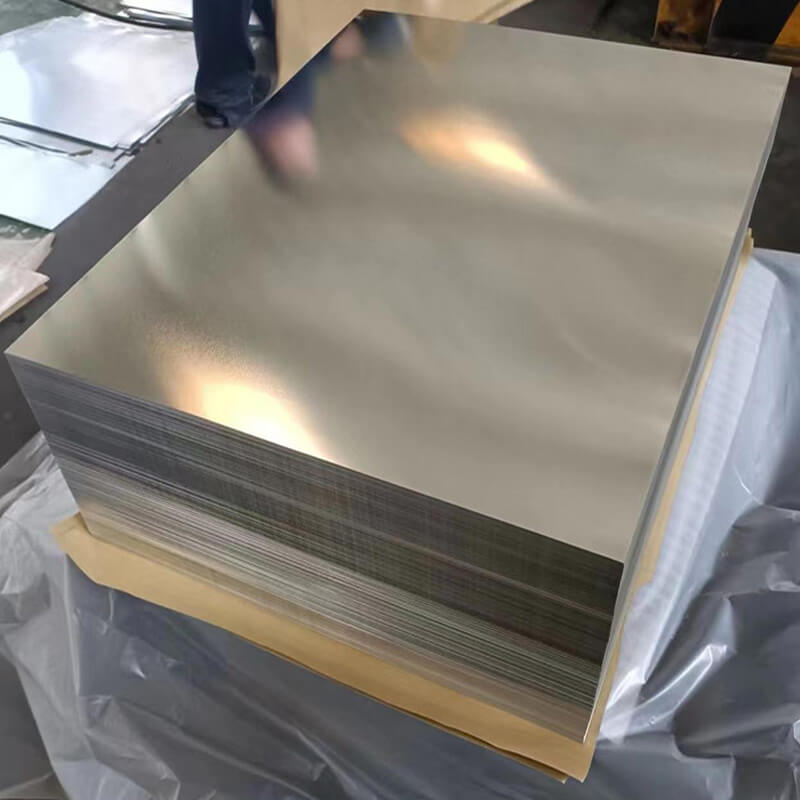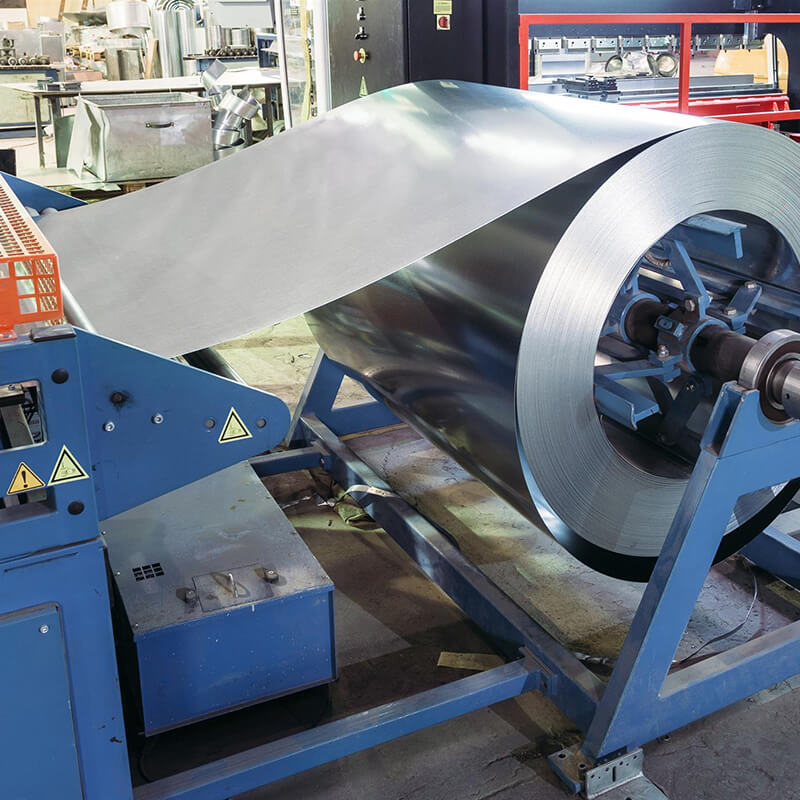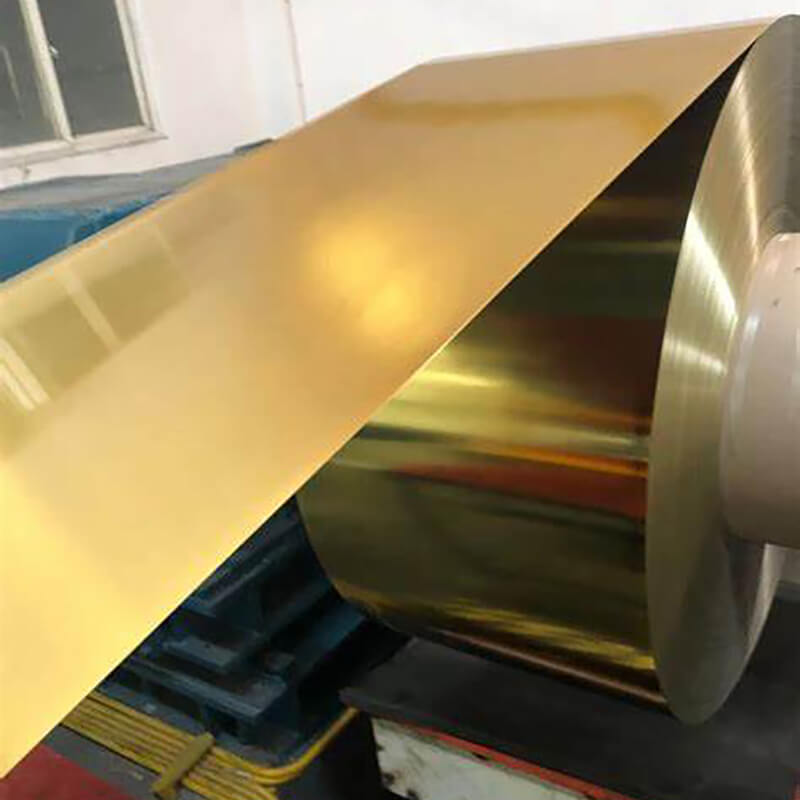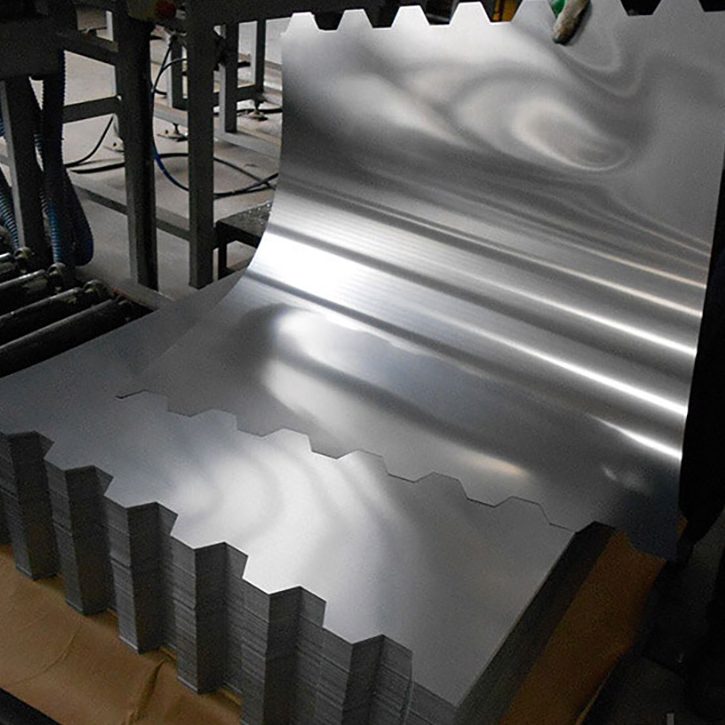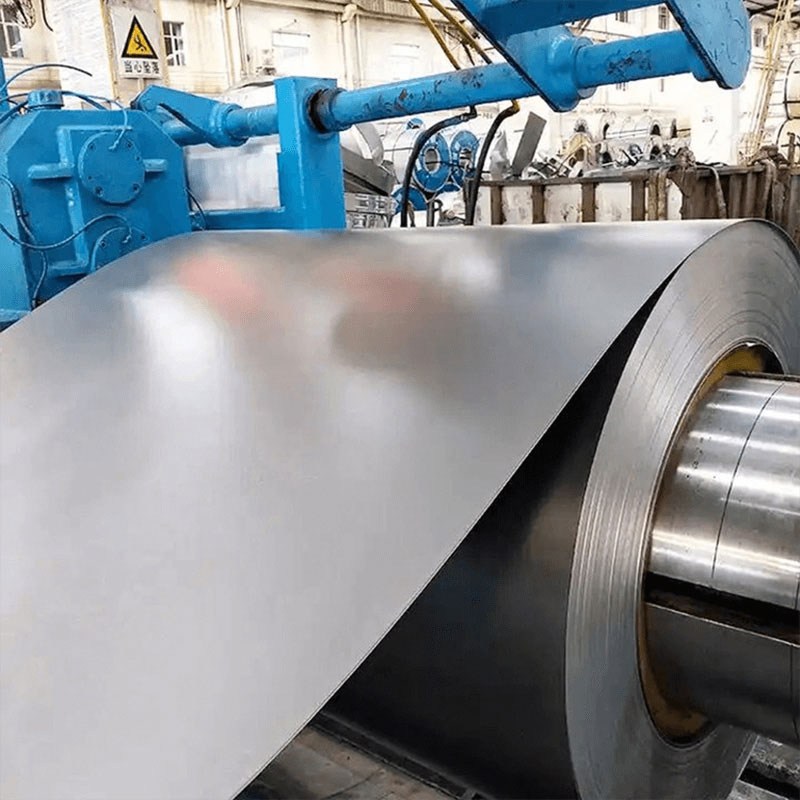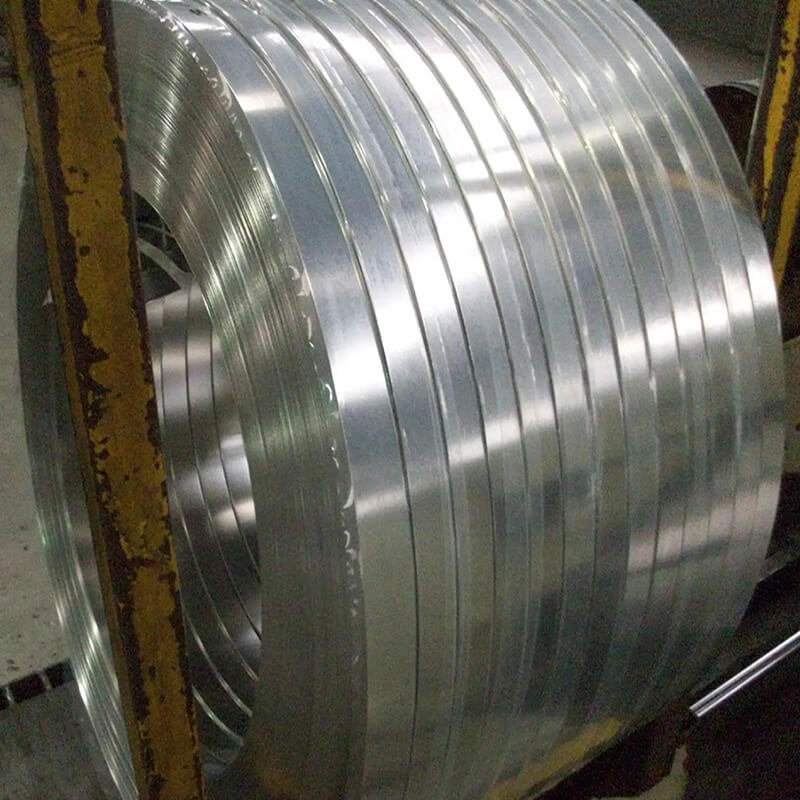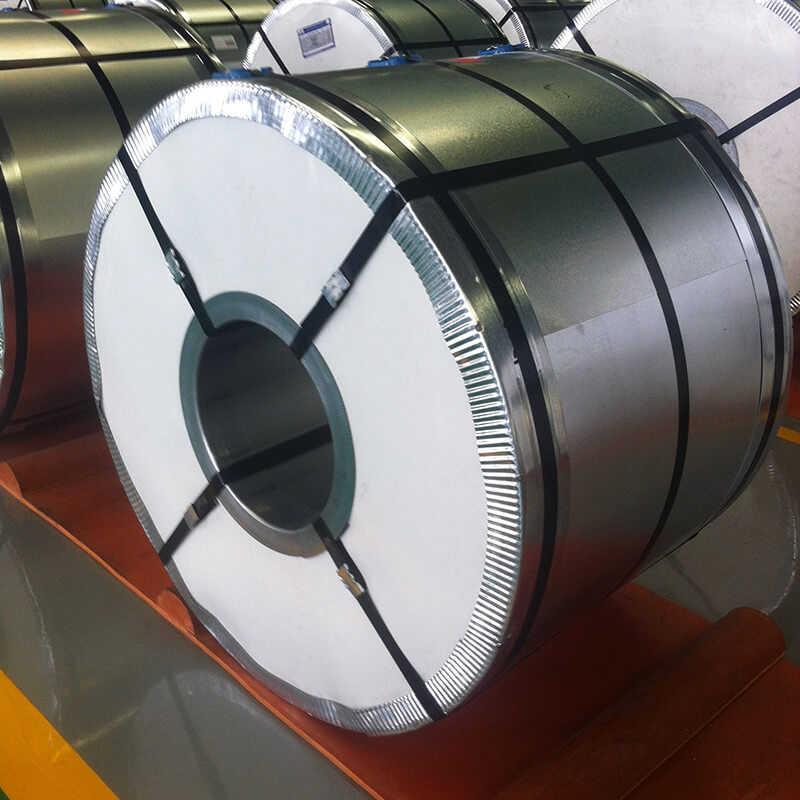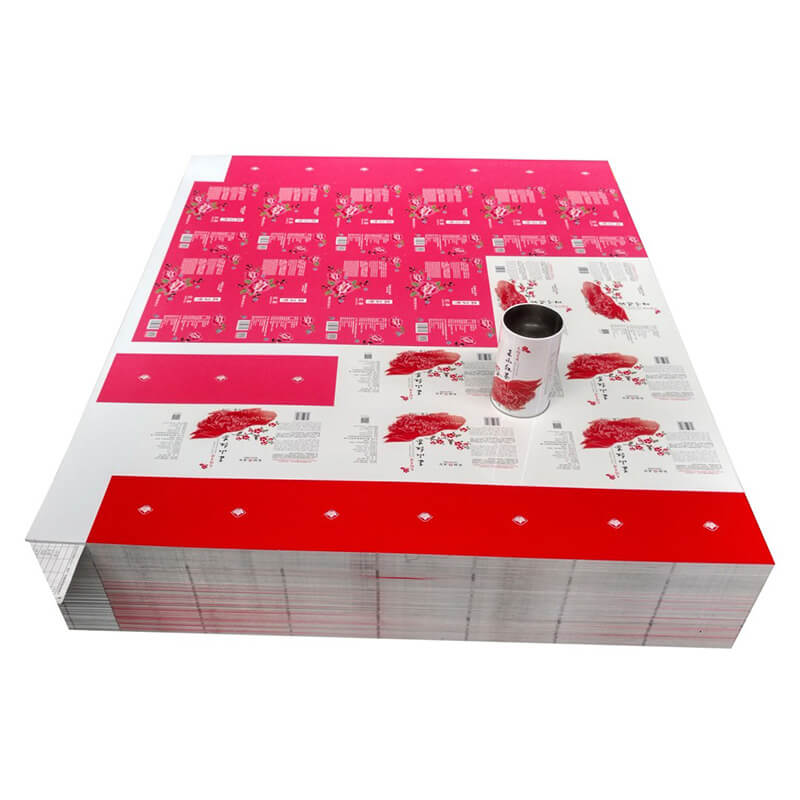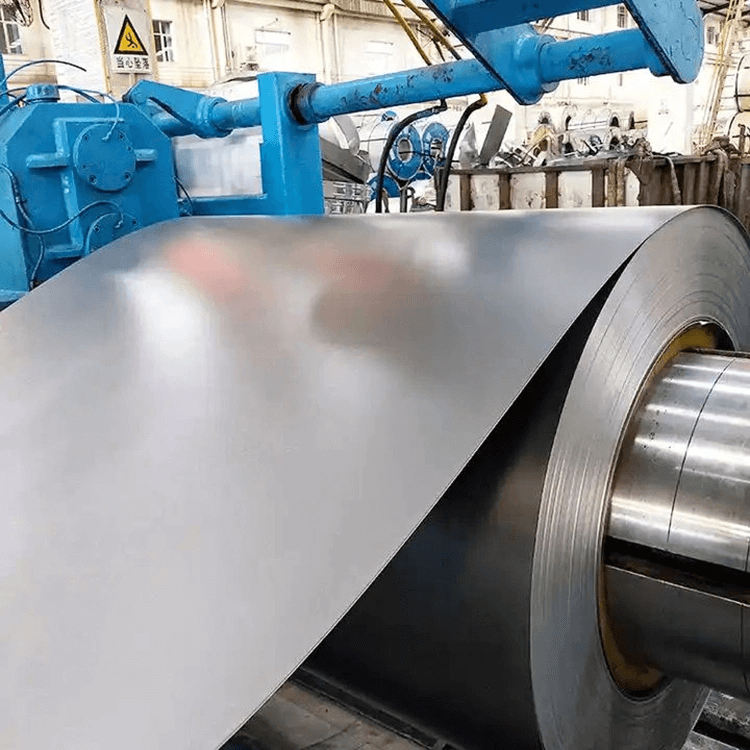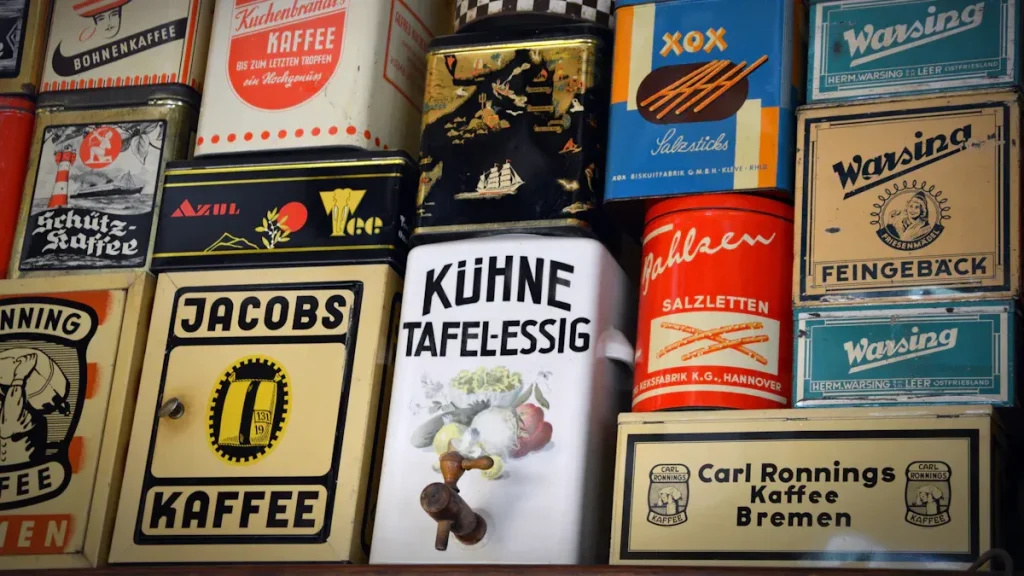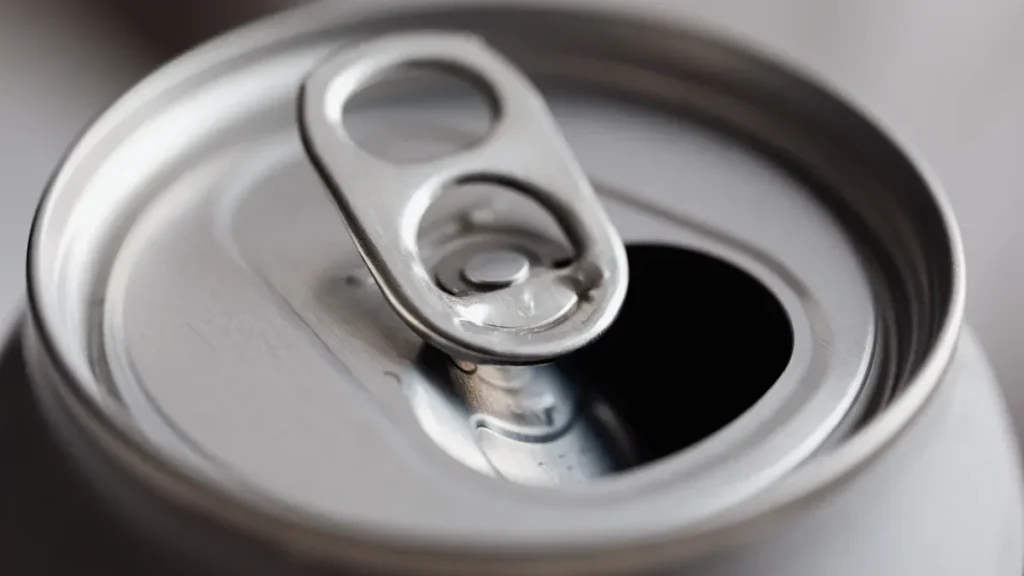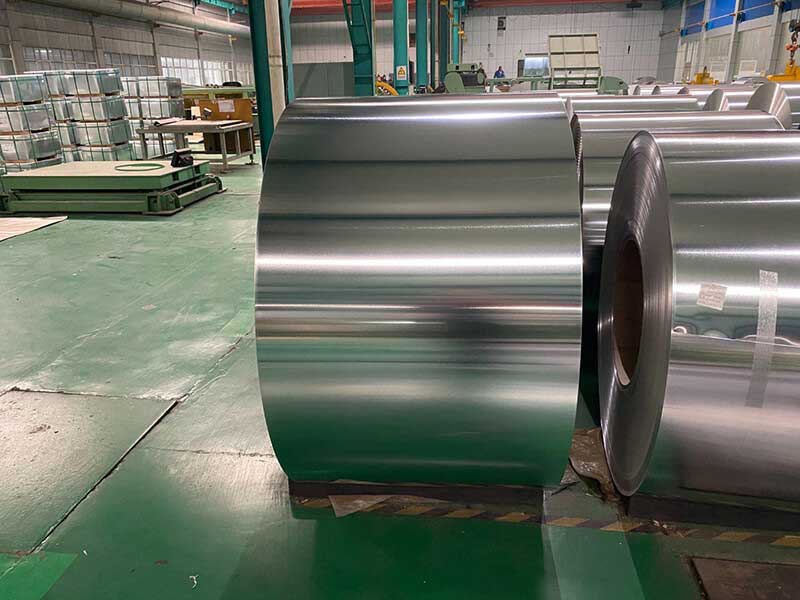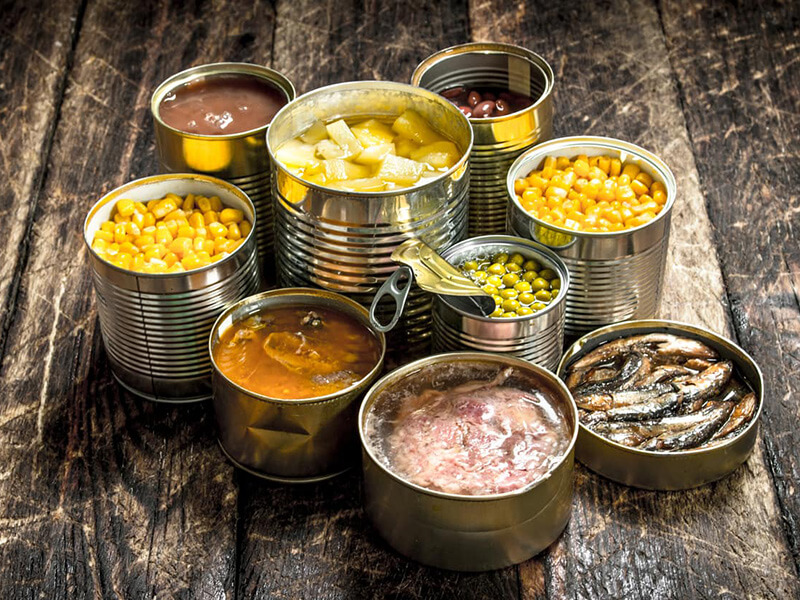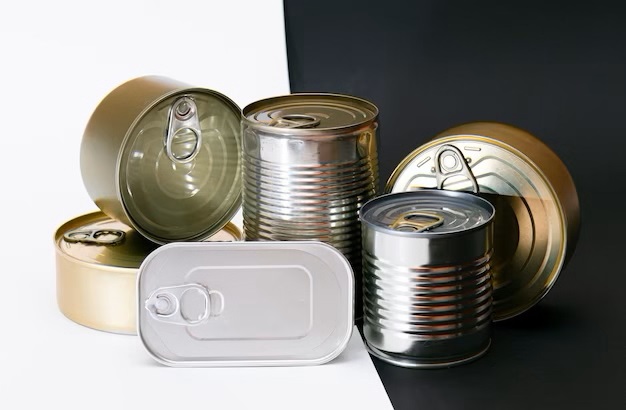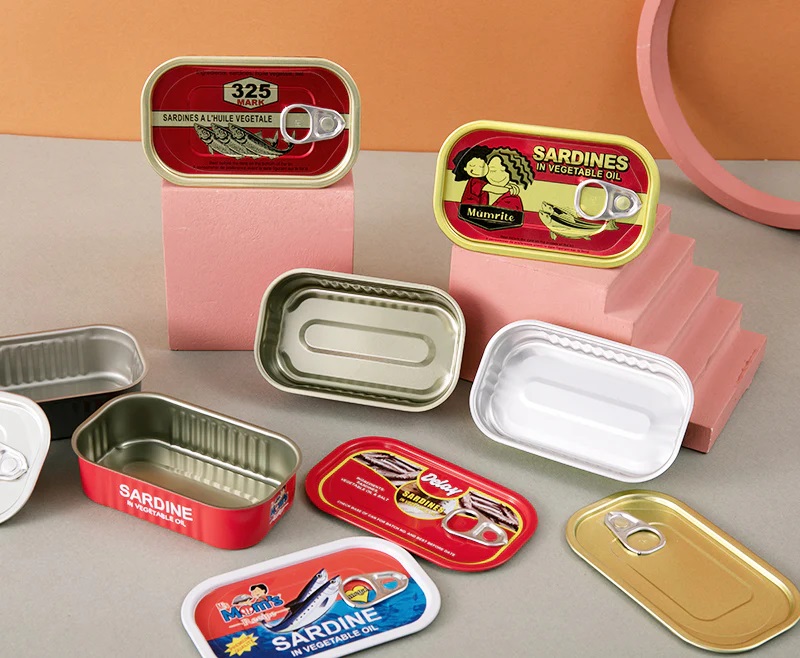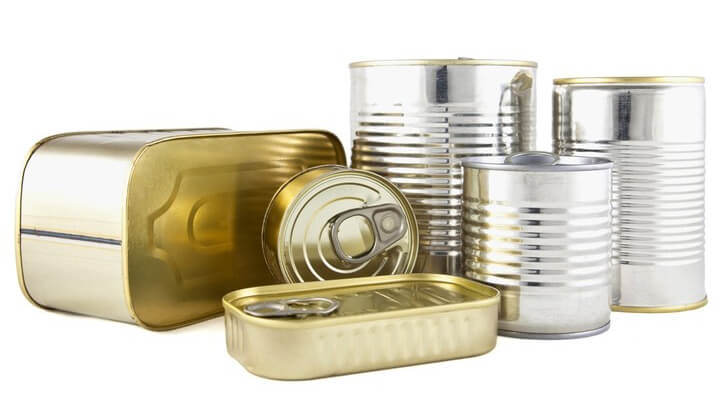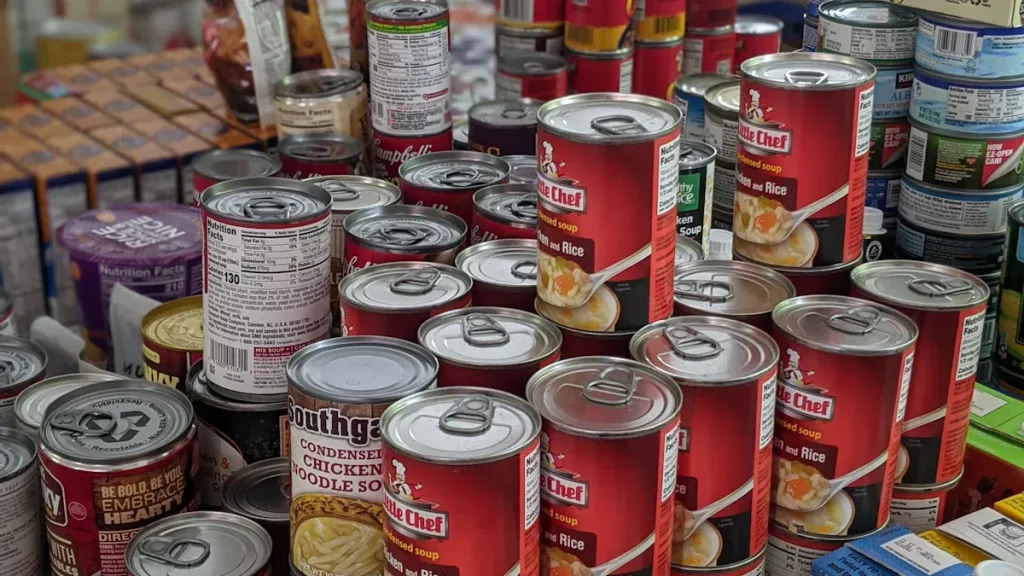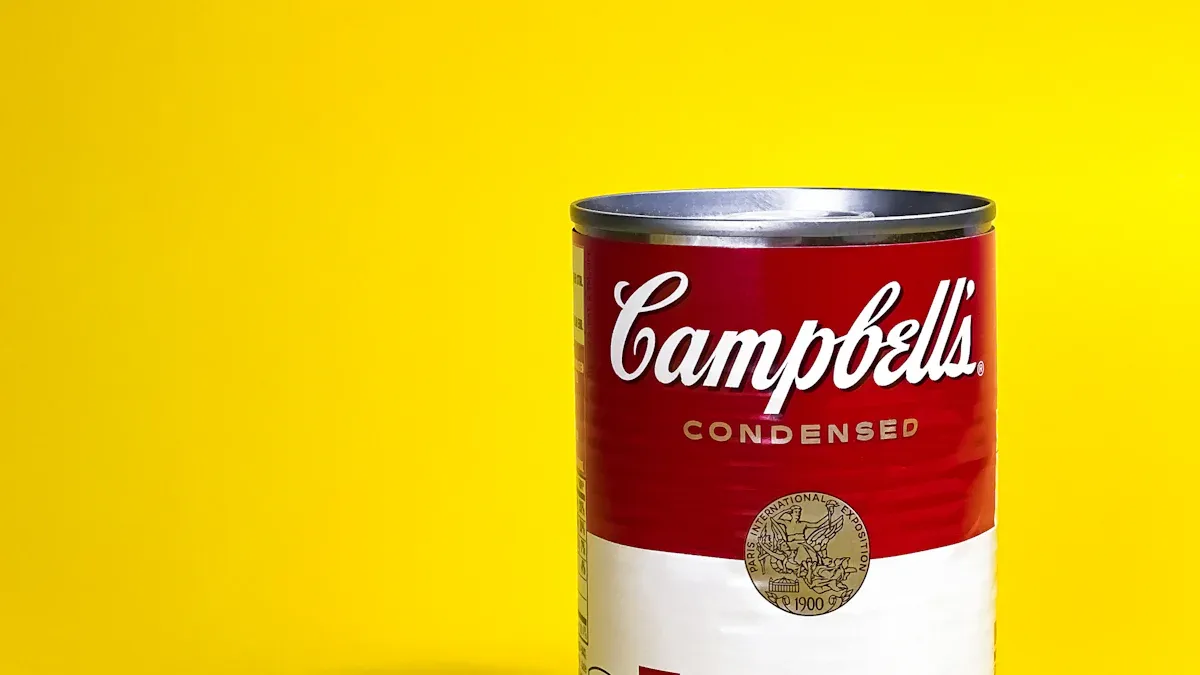
You need to match tinplate cylindrical cans to your product’s specific requirements for optimal results. Effective packaging protects your goods by controlling exposure to oxygen, moisture, and light, which extends shelf life and maintains quality. Industry research shows that sealed packaging reduces microbial contamination and food waste, making your products safer and more sustainable. Consider factors such as size, shape, material, coating, printing, sealing, and order logistics to select the best can for your brand.
Key Takeaways
- Match your tinplate can to your product’s needs for optimal protection and quality.
- Consider the type of product you are packaging, such as food or chemicals, to choose the right can.
- Select cans with strong durability to protect your products during shipping and storage.
- Use custom sizes and shapes to enhance your brand’s visibility and meet specific packaging requirements.
- Ensure your cans have food-safe coatings to comply with health standards and maintain product safety.
- Choose the right sealing method, like double seams, to keep your products fresh and secure.
- Plan your orders based on quantity and lead time to ensure timely delivery and cost-effectiveness.
- Opt for recyclable tinplate cans to support sustainability and reduce environmental impact.
Product Needs
Product Type
Food
You must consider the type of product you plan to package. Food items require packaging that maintains freshness and prevents contamination. Tinplate cylindrical cans offer a strong physical barrier, which keeps out oxygen, moisture, and light. This protection helps preserve the flavor and nutritional value of products like tea, coffee, candy, and health supplements. The opaque nature of tinplate reduces oxidation risk, so your food stays safe and appealing for longer periods.
Chemicals
If you package chemicals, you need containers that resist corrosion and prevent leaks. Tinplate cylindrical cans provide high rigidity and excellent ductility, which means they withstand rough handling and complex manufacturing processes. These cans suit a wide range of chemical products, offering reliable protection during transport and storage. Their strong construction ensures that hazardous materials remain secure, reducing the risk of spills or contamination.
Tip: Review the table below to see common product categories that benefit from tinplate cylindrical cans.
| Product Category | Description |
|---|---|
| Food | Used for packaging items like tea, coffee, health care products, candy, and more. |
| Beverages | Suitable for juices, coffee, tea, sports drinks, and carbonated beverages like cola and beer. |
| Grease | Ideal for packaging oily foods to prevent oxidation and preserve nutritional value. |
| Chemicals | Strong and protective, making it suitable for various chemical products. |
| Spray | Designed to withstand high temperatures and pressures for spray applications. |
| Other | Includes various shapes and designs for items like biscuit barrels and stationery boxes. |
Packaging Goals
Protection
You want packaging that keeps your product safe from damage and spoilage. Tinplate cylindrical cans deliver strong durability and resist punctures, making them ideal for products that need extra protection. Their high rigidity ensures that your goods arrive intact, even after long-distance shipping. Compared to plastic containers, tinplate cans offer a superior barrier against oxygen and moisture, which helps extend shelf life.
- Tinplate’s opaque surface blocks light, reducing oxidation.
- High rigidity prevents dents and damage during transport.
- Environmentally friendly choice compared to plastic and paper.
Branding
Your packaging should also support your branding goals. Tinplate cylindrical cans create a premium and authentic look, which can help your product stand out on store shelves. Their versatile shapes and smooth surfaces make labeling and printing easy, allowing you to showcase your brand identity. Customers often perceive tinplate packaging as high-quality, which can boost your product’s appeal and sales.
| Packaging Type | Durability and Protection | Branding Effectiveness | Shelf Life Preservation |
|---|---|---|---|
| Tinplate Cans | Strong physical barrier, resistant to punctures | Perceived as premium and authentic | Excellent barrier to oxygen, moisture, and light |
| Aluminum Cans | Lighter but prone to dents | Good but less premium perception | Good barrier properties, but potential safety concerns due to plastic lining |
| Plastic Containers | Lightweight and flexible, but less rigid | Generally perceived as less premium | Less effective at preserving food quality due to permeability |
You should match your packaging choice to your product’s needs and your brand’s image. Tinplate cylindrical cans offer a combination of protection and visual appeal that supports both goals.
Tinplate Cylindrical Cans
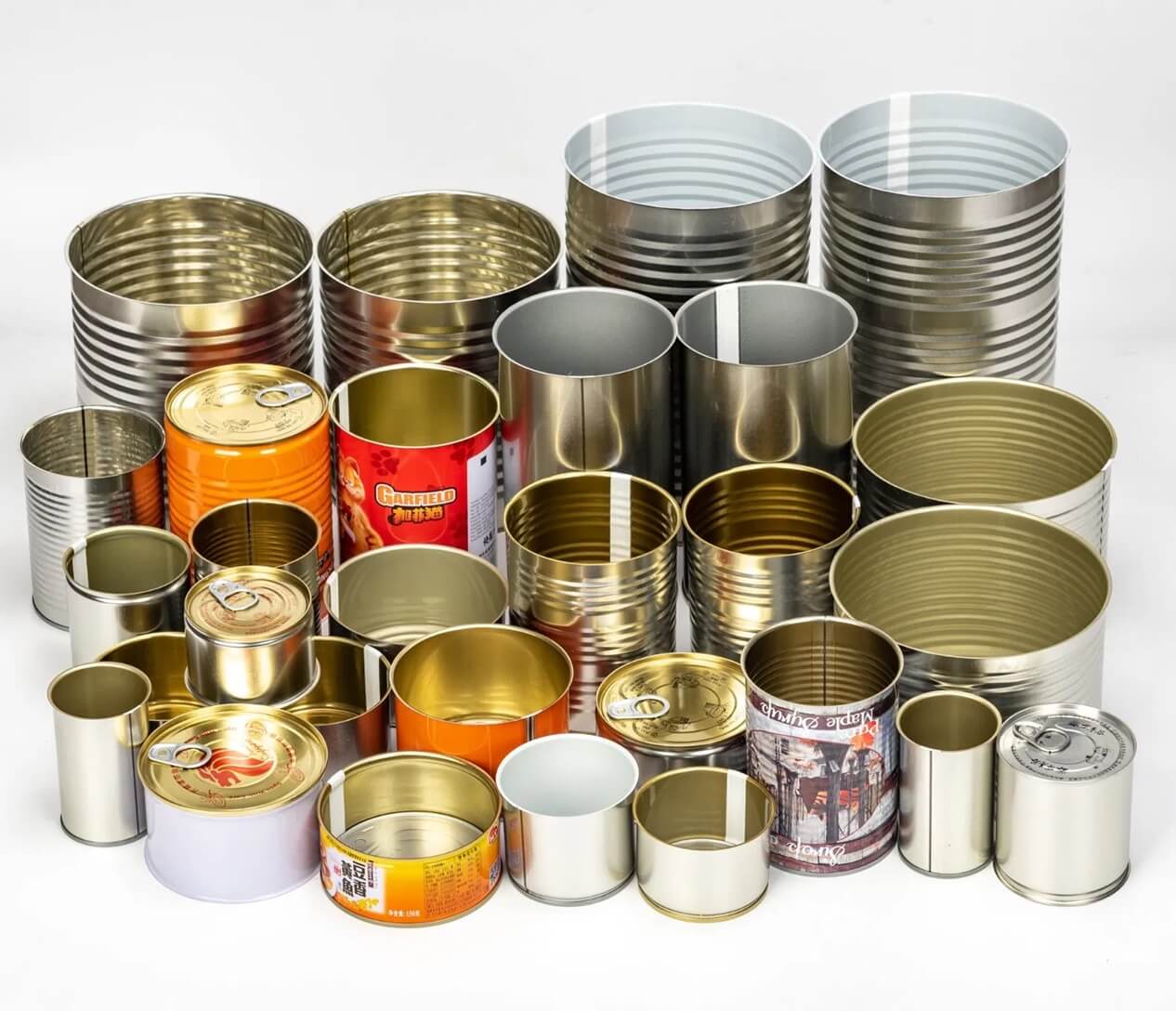
Key Features
Durability
You need packaging that can withstand the demands of shipping, storage, and handling. Tinplate cylindrical cans deliver unmatched strength because they combine steel with a protective tin coating. This construction makes the cans ultra-durable and unbreakable, even under pressure. Unlike aluminum containers, which can bend or leak, tinplate cylindrical cans maintain their shape and integrity. You can trust them to protect your products from damage, reducing waste and returns.
Note: Tinplate cylindrical cans also provide excellent sound barrier properties, which help protect sensitive products from vibration and noise during transport.
| Advantage | Description |
|---|---|
| Durability | Tinplate provides robust protection during transit, reducing waste from damaged goods. |
| Barrier Properties | Excellent barrier properties keep products fresh and safe from oxidation, moisture, and air. |
| Recyclability | Tinplate can be recycled infinitely without quality loss, supporting sustainability. |
| Cost-effectiveness | Tinplate is often more cost-effective compared to other materials, making it a smart choice. |
Corrosion Resistance
You want packaging that resists corrosion, especially if you store food or chemicals. Tinplate cylindrical cans excel in this area. The tin coating acts as a shield, preventing rust and chemical reactions that could spoil your product. This corrosion resistance outperforms plain steel and even aluminum in many environments. The tinning process, flow melting, and chemical passivation all enhance the can’s stability and lifespan.
| Metal Type | Corrosion Resistance | Notes |
|---|---|---|
| Tinplate | Excellent | Coating weight affects performance |
| Aluminum | Moderate | Prone to pitting in certain environments |
| Steel | Poor | Requires protective coatings |
You benefit from this superior protection, especially for products that require long shelf life or face harsh storage conditions. Tinplate cylindrical cans have become the preferred choice for food packaging because they keep contents safe and uncontaminated.
Sizes
Standard Range
You can choose from a wide range of standard sizes to match your product’s volume and packaging needs. Most tinplate cylindrical cans come in capacities from 125 ml up to 5.5 liters or even larger. This flexibility allows you to package everything from small samples to bulk goods. Standard sizes also make it easier to automate filling and labeling processes, saving you time and money.
Tip: The smooth, cylindrical shape of these cans makes labeling fast and efficient, which helps you maintain consistent branding across your product line.
Custom Options
You may need a unique size or shape to set your product apart. Custom tinplate cylindrical cans offer you the chance to create packaging that reflects your brand identity and meets specific requirements. Customization supports unique branding opportunities, market differentiation, and enhanced visual appeal. You can select special heights, diameters, or even decorative finishes to make your product stand out.
| Benefit | Description |
|---|---|
| Unique Branding Opportunities | Custom tin cans allow brands to reflect their identity through personalized designs, logos, and colors. |
| Market Differentiation | Custom sizes help brands stand out in a competitive market by offering unique packaging solutions. |
| Enhanced Visual Appeal | Fully customized designs create attractive visuals that resonate with consumers, improving engagement. |
- Custom tin containers serve as effective product protectors, ensuring the safety and integrity of the contents.
- They are durable and reusable, adding value to the product and enhancing customer satisfaction.
Custom tinplate cylindrical cans do more than just hold your product. They act as marketing tools that boost brand visibility and create memorable experiences for your customers.
Size and Shape
Selecting the right size and shape for your packaging ensures that your product remains secure, attractive, and easy to handle. You need to evaluate both the dimensions and the form of your tinplate can to match your product’s quantity and presentation goals.
Dimensions
Diameter
You should start by considering the diameter of your can. The diameter determines how much product you can fit inside and affects the overall stability of the container. A wider diameter suits bulkier items or products that require easy access, such as powdered foods or creams. Narrow diameters work well for single-serve items or products that need precise dispensing.
Height
Height plays a crucial role in packaging design. You can choose taller cans for products that need to stand out on shelves or require more vertical space, like spaghetti or long biscuits. Shorter cans offer convenience for stacking and storage, making them ideal for compact goods or samples.
Tip: Always match the diameter and height to your product’s physical properties and the intended use. This approach helps you optimize shelf space and improve consumer experience.
| Factor | Description |
|---|---|
| Structure and Design | Consider the three-piece construction and double seaming for a hermetic seal. |
| Sizes and Capacities | Evaluate standard sizes (e.g., 8 oz, 16 oz) and inquire about custom sizes for specific needs. |
| Logistical Factors | Assess transportation efficiency and storage requirements to optimize shipping and warehouse operations. |
Shape Options
Cylindrical
Cylindrical cans remain the most popular choice for many brands. You benefit from a large, uninterrupted surface area, which makes it easy to display product details, brand logos, and safety information. This design helps consumers recognize your product quickly and understand its features. You also find that cylindrical cans stack efficiently, saving space during shipping and storage.
Conical
Conical cans offer a unique look and practical advantages. You can use them to create a distinctive brand image or to package products that require easy pouring. The tapered shape allows for nesting, which improves storage efficiency. However, you may face challenges with labeling, since the sloped sides reduce the available space for graphics and information. You need to plan your branding strategy carefully when choosing conical cans.
- Cylindrical cans provide a smooth surface for labels and printing, supporting strong brand visibility.
- Conical cans stand out visually but require custom labeling solutions.
Choosing between cylindrical and conical shapes depends on your product’s form, your branding goals, and your logistical needs. You should weigh the benefits of each option before making a decision.
Tinplate cylindrical cans give you flexibility in both size and shape, allowing you to tailor your packaging to your product’s requirements and your brand’s identity.
Material and Coating
Choosing the right material and coating for your tinplate cylindrical can ensures product safety, durability, and brand appeal. You must evaluate both the grade of tinplate and the type of coating to match your product’s requirements.
Tinplate Grades
Thickness
You should pay close attention to tinplate thickness when selecting your can. Thicker tinplate provides greater strength and protection, especially for products that require robust packaging. Manufacturers use tinplate for a wide range of containers, including food cans, beverage cans, and even artistic cans. You can find tinplate grades suitable for packaging paints, coatings, and hazardous materials with UN approval. These grades also work for solvent-based and water-based products.
Tinplate thickness directly influences the can’s ability to resist dents and maintain its shape during transport. You gain peace of mind knowing your product remains secure from external damage.
Corrosion Resistance
Corrosion resistance is a critical factor for both food and chemical packaging. You want a tinplate grade that offers superior protection against rust and chemical reactions. The corrosion resistance of tinplate depends on its coating thickness and the properties of the substrate steel. When electrode-deposited tin reacts with steel, it forms an iron-tin alloy that greatly enhances durability.
Manufacturers have improved tinplate’s corrosion resistance by reducing chemical use during processing and introducing advanced passivation techniques. These innovations help you protect your products from spoilage and contamination.
| Application Type | Common Uses | Size Range |
|---|---|---|
| Food Packaging | Retail food containers | 1L to 25L |
| Chemical Packaging | Paint, adhesive, solvent | 0.1L to 60L |
You can use tinplate cans for packing paint, ink, solvent, adhesive, and food products. Leak-proof sealing makes these cans ideal for hazardous materials and liquids.
Coating Types
Food-Safe
You need food-safe coatings to ensure your packaging meets health standards. Tin coatings are non-toxic and do not react with food, making them safe for storing a wide range of products. You can choose modified epoxy resin coatings to reduce harmful substances. New polyester or polyamide coatings offer BPA-free options and enhanced chemical resistance, which allows you to package a wider variety of foods.
| Property | Tin | Zinc |
|---|---|---|
| Non-toxicity | Non-toxic, safe for food | Toxic in significant amounts |
| Reactivity | Non-reactive with food | Can react with acidic foods |
| Corrosion Resistance | Adequate for food storage | Excellent in industrial use |
| Barrier Properties | Effective against air/moisture | N/A |
Tip: Always confirm that your chosen coating meets regulatory standards for food safety and does not leach harmful chemicals into your product.
Decorative
Decorative coatings help you create packaging that stands out and attracts customers. You can select metallic finishes and vibrant prints to make your cans pop on store shelves. Unique textures and shine boost brand recognition and encourage customers to reuse tins, keeping your brand visible in their homes.
- Metallic finishes and vibrant prints enhance visual appeal.
- Unique textures draw attention and increase collectibility.
- Decorative coatings support eco-conscious branding since tinplate cans are 100% recyclable and reusable.
You can promote sustainability by choosing decorative coatings that reduce plastic use and encourage consumers to repurpose your packaging.
Can Construction
When you select tinplate cylindrical cans, you must understand the differences in construction. The way a can is built affects its strength, safety, and suitability for your product. You will find two main types: 2-piece and 3-piece cans. Each offers unique features and benefits.
2-Piece
Features
A 2-piece tinplate can uses a single sheet of metal to form the body and bottom. Manufacturers shape this piece through deep drawing or drawing and ironing. You get a seamless body with only one seam at the top after filling. This design reduces weak points and improves pressure resistance.
| Feature | Two-Piece Can | Three-Piece Can |
|---|---|---|
| Components | Body + Bottom (single piece) + Top Lid (seamed after filling) | Cylindrical Body (rolled from a flat sheet and welded) + Top Lid + Bottom Lid |
| Production Process | Deep drawing or drawing & ironing from a single metal sheet | Rolling, welding, attaching bottom, sealing with top lid |
| Seam Type | Seamless body (one seam at top) | Two end seams + one side seam |
| Strength & Pressure Resistance | Stronger, no side seam | Less strong, due to welded seam |
| Leakage Risk | Lower | Higher |
| Corrosion Resistance | Better | Higher risk at seams |
You benefit from fewer exposed edges, which means better corrosion resistance. The seamless body also lowers the risk of leaks. You can rely on 2-piece cans for products that need extra protection.
Uses
You should choose 2-piece cans for carbonated drinks, pressurized contents, and foods that require long shelf life. Their strong construction makes them ideal for beverages like soda and beer. You also see these cans used for premium food items, where safety and freshness matter most.
Tip: If your product faces rough handling or needs to stay fresh for months, a 2-piece can gives you peace of mind.
3-Piece
Features
A 3-piece tinplate can has a cylindrical body rolled from a flat sheet, then welded or soldered along the side. Manufacturers attach separate top and bottom lids using double seams. This method creates two end seams and one side seam.
You get more flexibility in size and shape with 3-piece cans. The design allows for custom heights and diameters, which helps you meet unique packaging needs. However, the seams can weaken over time, especially if exposed to moisture or chemicals.
Uses
You often see 3-piece cans used for canned vegetables, paints, adhesives, and non-pressurized foods. Their construction suits products that do not require high pressure resistance. You can also select 3-piece cans for large-volume packaging, where custom dimensions are important.
Note: If you need a specific size or want to package non-carbonated goods, a 3-piece can offers the versatility you need.
Food Safety and Product Protection
You must prioritize food safety when choosing can construction. In food processing, you need to maintain hygienic design and proper containment. You should separate construction and production areas with barriers and seal openings to prevent contamination. These steps help you protect your products and meet safety regulations.
- Develop an environmental plan before construction.
- Remove movable equipment from the zone.
- Use heavy gauge plastic sheeting or temporary walls to isolate areas.
You ensure long-term product safety by selecting cans with strong seams and corrosion resistance. For foods and beverages, 2-piece cans often provide better protection. For non-food items, 3-piece cans offer flexibility and cost savings.
Choosing the right can construction helps you deliver safe, high-quality products to your customers.
Sealing and Closure
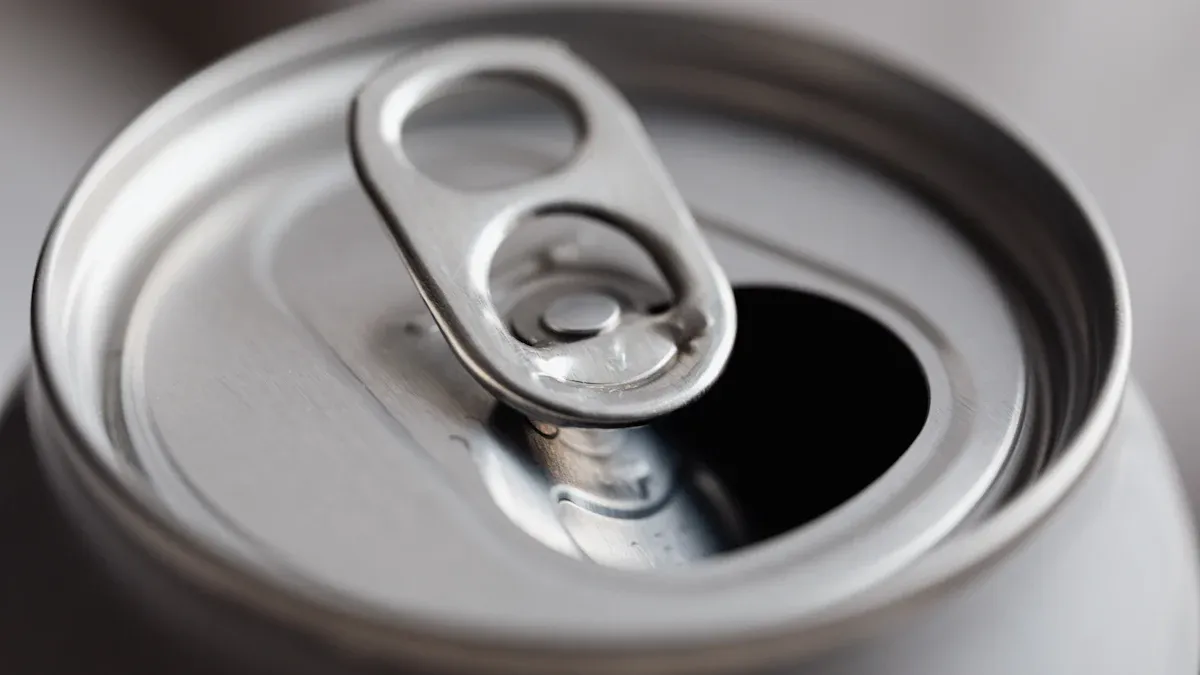
Choosing the right sealing and closure method for your tinplate cylindrical can ensures product safety and enhances user experience. You must understand how each option affects the integrity of your packaging and the satisfaction of your customers.
Seal Types
Double Seam
You rely on double seam seals to keep your products safe and fresh. Manufacturers create double seams by mechanically folding and interlocking the can’s end and body. This process forms a tight, secure seal that resists leaks and contamination. Sealing compounds, also called gasket compounds, fill any tiny gaps left after forming the double seam. These compounds make the seal airtight and prevent moisture or air from entering the can. You protect your product’s quality and extend its shelf life by choosing double seam seals. This method works especially well for food and beverage cans, where maintaining freshness is critical.
Double seam seals provide a strong barrier against external elements. You reduce the risk of spoilage and ensure your product reaches consumers in perfect condition.
Welded
You may select welded seals for cans that require extra strength. Welded seams use heat to fuse the metal along the can’s side, creating a continuous bond. This technique eliminates the need for solder and reduces the risk of chemical contamination. Welded seams work well for three-piece cans, especially those used for chemicals or paints. You gain confidence knowing that welded seams offer reliable protection against leaks and spills. Welded construction also supports high-pressure applications, making it suitable for products that need robust containment.
Closure Options
Lids
You have several lid options to choose from, each designed to meet specific needs. Standard lids provide a secure closure and help maintain product integrity. You can select press-fit lids for easy application and removal. These lids work well for dry goods and non-liquid products. You may also find screw-top lids, which offer added security and prevent accidental opening during transport. The right lid keeps your product safe and makes it easy for customers to access the contents.
Easy-Open
You boost consumer satisfaction by offering easy-open closures. These designs allow users to open the can without tools or excessive force. Easy-open lids use pull-tabs or press-and-lift mechanisms, making them ideal for food and beverage packaging. Customers prefer easy-open cans because they save time and reduce frustration. You also improve safety practices, as these closures minimize the risk of injury during opening.
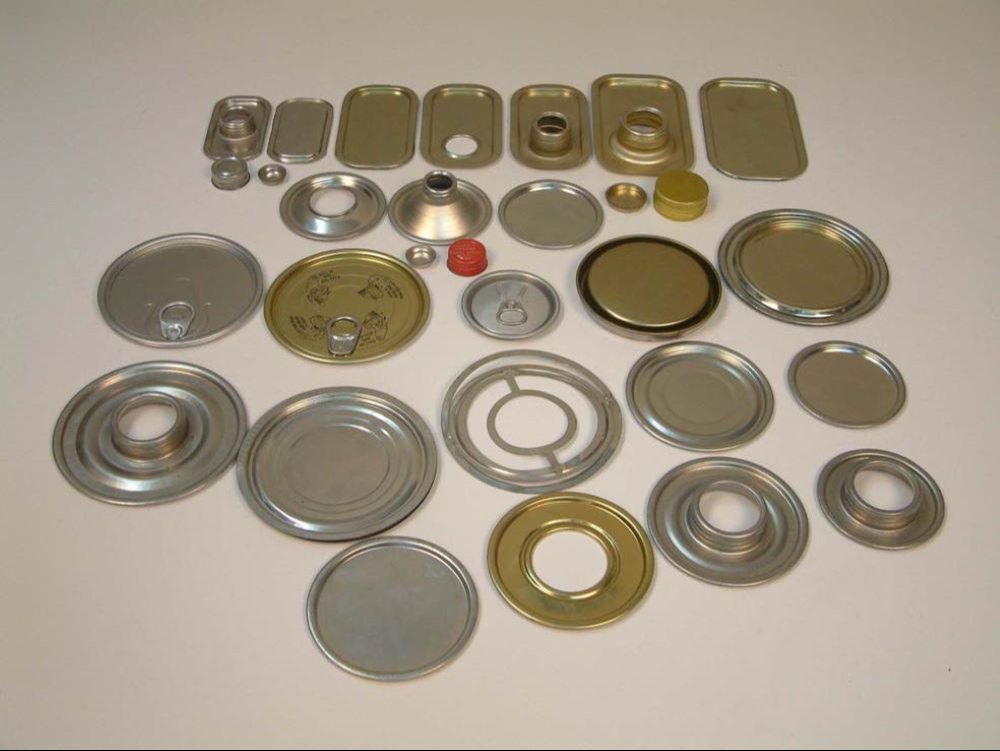
| Closure Type | Ease of Use | Consumer Preference | Impact on Safety Practices |
|---|---|---|---|
| Press & Lift | High | Preferred | Increases compliance |
| Complex Closures | Low | Less Preferred | May lead to non-compliance |
You increase brand loyalty by choosing closures that make your product convenient and safe to use. Easy-open features encourage repeat purchases and positive reviews.
Selecting the right sealing and closure options helps you deliver products that meet industry standards and exceed customer expectations. You ensure product integrity and create a positive experience for every user.
Printing and Branding
Labeling
Techniques
You have several effective labeling techniques to choose from when working with tinplate cylindrical cans. Each method offers unique benefits for durability and visibility. The table below summarizes the most popular options:
| Technique | Description | Benefits |
|---|---|---|
| Offset/Flexo Printing | High-quality printing for labels | Enhances visibility and aesthetic appeal |
| Digital Printing | Ideal for smaller batches | Flexible and cost-effective for custom designs |
| Material Options | Plastic (PP) or paper labels | Durable, with matte, gloss, or transparent finish |
| Label Coverage | Full wrap or partial labels | Simulates printed can or highlights design |
| Special Features | U-shaped labels for cans with ears | Unique branding opportunities |
You can select offset or flexo printing for large production runs. These methods deliver sharp graphics and vibrant colors. Digital printing works best for short runs or custom projects, giving you flexibility without high setup costs. You may also choose between plastic and paper labels, depending on your durability needs and desired finish.
- Rust and moisture resistance keeps your labels looking fresh.
- Tamper-proof designs add security for sensitive products.
- Airtight sealing extends shelf life and protects your brand reputation.
Placement
You benefit from the smooth, uninterrupted surface of cylindrical cans. This design makes label placement easy and consistent. You can apply full-wrap labels to maximize branding space or use partial labels to highlight specific features. U-shaped labels fit cans with handles or ears, giving you more creative options. You ensure that your product information and branding remain visible from every angle.
Tip: Use the large surface area of cylindrical cans to display your logo, product details, and safety information clearly.
Printing
Custom Designs
You can leverage custom printing to set your brand apart in a crowded marketplace. Custom tin cans showcase your creativity and innovation, helping you attract attention and build a memorable identity. You may incorporate logos, colors, and slogans directly onto the can, which strengthens product recognition and encourages brand recall.
- Custom tin cans visually represent your brand’s distinctiveness.
- Unique designs create a lasting impression with consumers.
- Personalized graphics help your products stand out on store shelves.
Custom tin containers allow you to tailor every aspect, from size and shape to color finishes and printing techniques. These options enhance both the visual appeal and the durability of your packaging.
Protective Finishes
You can choose from a variety of protective finishes to increase the longevity of your printed cans. Brushed finishes resist scratches and maintain their appearance over time. Polished finishes add a luxurious look and make colors pop, which improves your product’s shelf presence. Special coatings provide extra protection against scratches and corrosion, making your cans suitable for harsh environments.
You ensure your branding remains vibrant and your packaging stays durable by selecting the right protective finish for your tinplate cans.
Order and Logistics
When you plan your packaging strategy, you must consider order quantity and lead time. These factors affect your costs, delivery schedule, and ability to respond to market changes. Understanding supplier requirements helps you avoid delays and ensures you receive the right cans for your products.
Quantity
Small Batch
If you launch a new product or run a limited promotion, you may need a small batch of tinplate cylindrical cans. Many suppliers set minimum order quantities to optimize production and reduce costs. For most standard sizes, you should expect a minimum order of 3,000 pieces. Some suppliers require 10,000 pieces for smaller cans. You must confirm these details before placing your order.
| Size | Minimum Order Quantity |
|---|---|
| Large | 3,000 – 5,000 pcs |
| Small | 10,000 pcs |
Small batch orders allow you to test the market and adjust your packaging design. You can gather customer feedback and refine your product before committing to larger quantities. This approach reduces risk and supports innovation.
Tip: Ask your supplier about sample runs or pilot batches. These options help you evaluate can quality and fit before scaling up production.
Bulk
Bulk orders offer significant advantages if you have established products or high-volume sales. Suppliers often provide better pricing and faster turnaround for large orders. You can streamline logistics and reduce per-unit costs by ordering in bulk. Most suppliers set the minimum bulk order at 3,000 pieces, but you may negotiate higher volumes for custom designs or special finishes.
| Minimum Order Quantity |
|---|
| 3,000 pcs |
Bulk purchasing supports consistent branding and inventory management. You avoid stockouts and maintain steady supply for your distribution channels.
- Lower unit cost
- Reliable supply chain
- Easier inventory planning
Lead Time
Standard
Standard lead times depend on order size, can specifications, and supplier capacity. For most tinplate cylindrical cans, you should expect production and delivery to take 3 to 6 weeks. This timeline covers manufacturing, quality checks, and shipping. You must plan ahead to ensure your packaging arrives before your product launch or restock date.
Note: Lead times may vary during peak seasons or holidays. Communicate with your supplier early to secure your preferred schedule.
Custom
Custom orders require additional time for design, tooling, and approval. If you request unique sizes, shapes, or printed graphics, you should allow for extra weeks in your timeline. Custom lead times often range from 6 to 12 weeks, depending on complexity and supplier workload. You gain flexibility and brand differentiation, but you must balance these benefits with longer wait times.
| Order Type | Typical Lead Time |
|---|---|
| Standard | 3 – 6 weeks |
| Custom | 6 – 12 weeks |
You improve your planning by discussing lead times with your supplier during the quotation stage. This step helps you align your production schedule and avoid costly delays.
Plan your orders with both quantity and lead time in mind. You ensure smooth operations and deliver products to your customers on time.
Compliance
Safety Standards
Food Packaging
You must ensure your tinplate cylindrical cans meet strict safety standards for food packaging. The Food and Drug Administration (FDA) sets regulations that require all packaging materials to pose no health risks. You need to verify that your cans pass material safety evaluations and migration testing. These tests simulate real-world conditions to check if any harmful substances transfer from the can to the food. You protect your customers and your brand by choosing cans that comply with these standards.
| Safety Standard | Description |
|---|---|
| FDA Regulations | Ensure materials used in food packaging do not pose health risks. |
| Material Safety | Evaluation of chemical composition and migration testing to prevent harmful substances leaching into food. |
| Migration Testing | Simulates real-world conditions to assess the transfer of substances from packaging to food. |
Tip: Always request documentation from your supplier that confirms compliance with FDA and international food safety standards.
Chemical Packaging
You face different challenges when packaging chemicals. You must select cans that resist corrosion and prevent leaks. Manufacturers test tinplate cans for chemical compatibility and durability. You should look for certifications that prove the cans can safely contain paints, solvents, and other hazardous materials. Migration testing also applies to chemical packaging, ensuring that no dangerous substances escape or react with the contents.
- Choose cans with proven resistance to chemical reactions.
- Confirm that your packaging meets industry safety requirements.
- Request migration test results for chemical products.
Sustainability
Recyclability
You support sustainability by choosing tinplate cylindrical cans. Tinplate cans have a recyclability rate of 74%, which is higher than glass bottles and plastic containers. Aluminum cans offer a slightly higher rate, but tinplate remains a strong choice for eco-conscious brands. You help reduce landfill waste and promote a circular economy when you use recyclable packaging.
| Material | Recyclability Rate | Closed-Loop Circularity Rate |
|---|---|---|
| Tinplate Cans | 74% | N/A |
| Aluminum Cans | 76.1% | 96.7% |
| Glass Bottles | 30-60% | N/A |
| PET Bottles | 34% | N/A |
| Plastic Bottles | 3-10% | N/A |
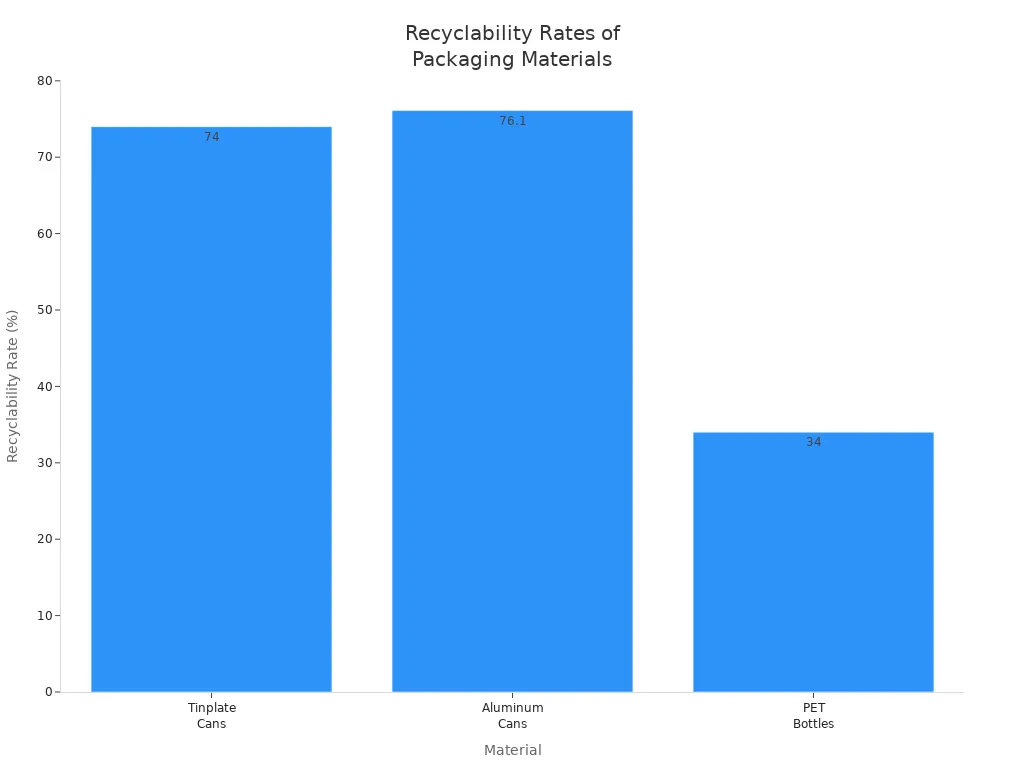
Note: Tinplate cans require less energy to produce than many alternatives, making them a sustainable option for your business.
Eco-Friendly
You can further reduce your environmental impact by choosing tinplate cans that support eco-friendly initiatives. Manufacturers now offer biodegradable coatings and reusable designs. You benefit from durable materials that minimize the need for frequent replacements. High recyclability helps you cut packaging waste and lower your ecological footprint.
- Tinplate cans integrate into eco-friendly initiatives.
- You contribute to the circular economy by using highly recyclable packaging.
- Biodegradable coatings and reusable designs are now available.
- Durable materials reduce the need for replacements.
- Low energy production supports sustainability.
By selecting tinplate cylindrical cans, you show your commitment to safety and sustainability. You protect your products, your customers, and the environment.
Selecting the right tinplate cylindrical can involves a clear process:
- Identify your product’s size and storage needs.
- Assess material strength for protection.
- Choose a food-safe lining for preservation.
- Review sealing and closure options for freshness.
- Finalize coating, printing, and order details.
You ensure product safety and brand success by following these steps. Use this checklist to make confident choices. For expert guidance, reach out to suppliers for samples or consultations.
FAQ
What products work best with tinplate cylindrical cans?
You can package food, beverages, chemicals, paints, and promotional items in tinplate cylindrical cans. These cans offer strong protection and preserve freshness. You gain flexibility for both retail and industrial applications.
How do I choose the right size for my product?
You should measure your product’s volume and physical dimensions. Select a can that fits your product without excess space. Standard sizes range from 125 ml to 5.5 liters. Custom sizes are available for unique needs.
Are tinplate cans safe for food storage?
You benefit from food-safe coatings and strict manufacturing standards. Tinplate cans meet FDA regulations for food contact. Always confirm that your supplier provides documentation for compliance.
Can I customize the design and printing on my cans?
You can request custom printing, colors, and finishes. Most suppliers offer offset, flexo, or digital printing. Custom designs help your brand stand out and attract customers.
What is the minimum order quantity for tinplate cans?
You usually need to order at least 3,000 pieces for standard cans. Small cans may require a minimum of 10,000 pieces. Ask your supplier about sample runs or pilot batches.
How long does production and delivery take?
You should expect standard orders to take 3 to 6 weeks. Custom designs may require 6 to 12 weeks. Lead times depend on order size and complexity.
Are tinplate cans recyclable and eco-friendly?
You support sustainability by choosing tinplate cans. These cans have a recyclability rate of 74%. You can also select biodegradable coatings and reusable designs to further reduce environmental impact.
Tip: Always check with your supplier for the latest eco-friendly options and recycling guidelines.

